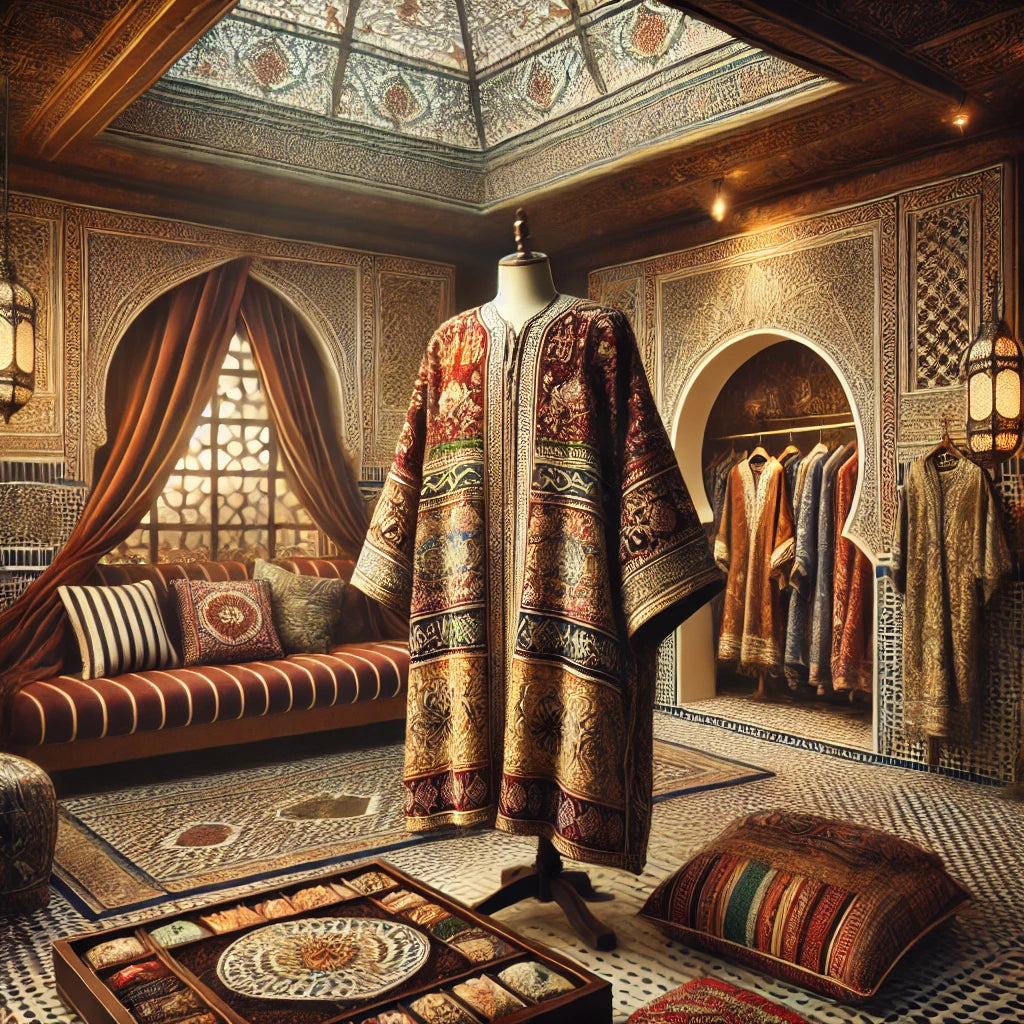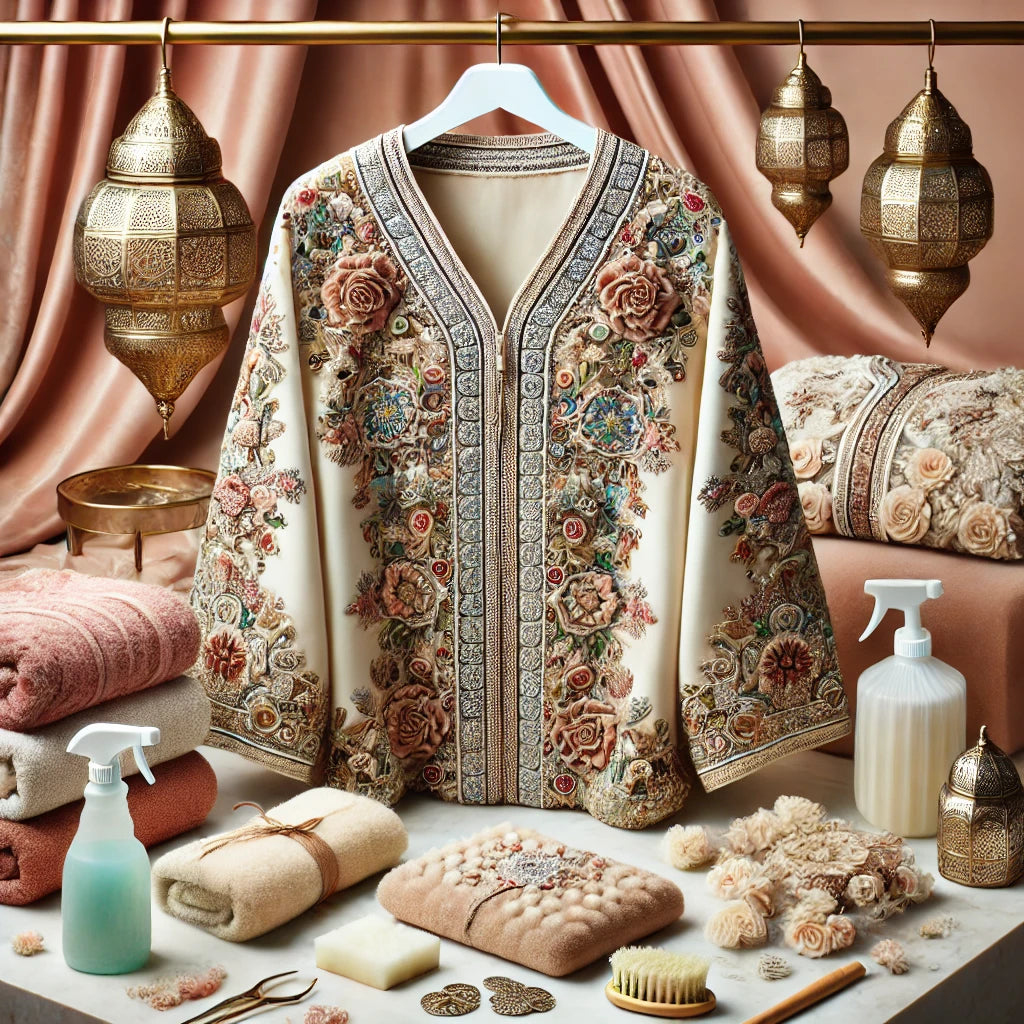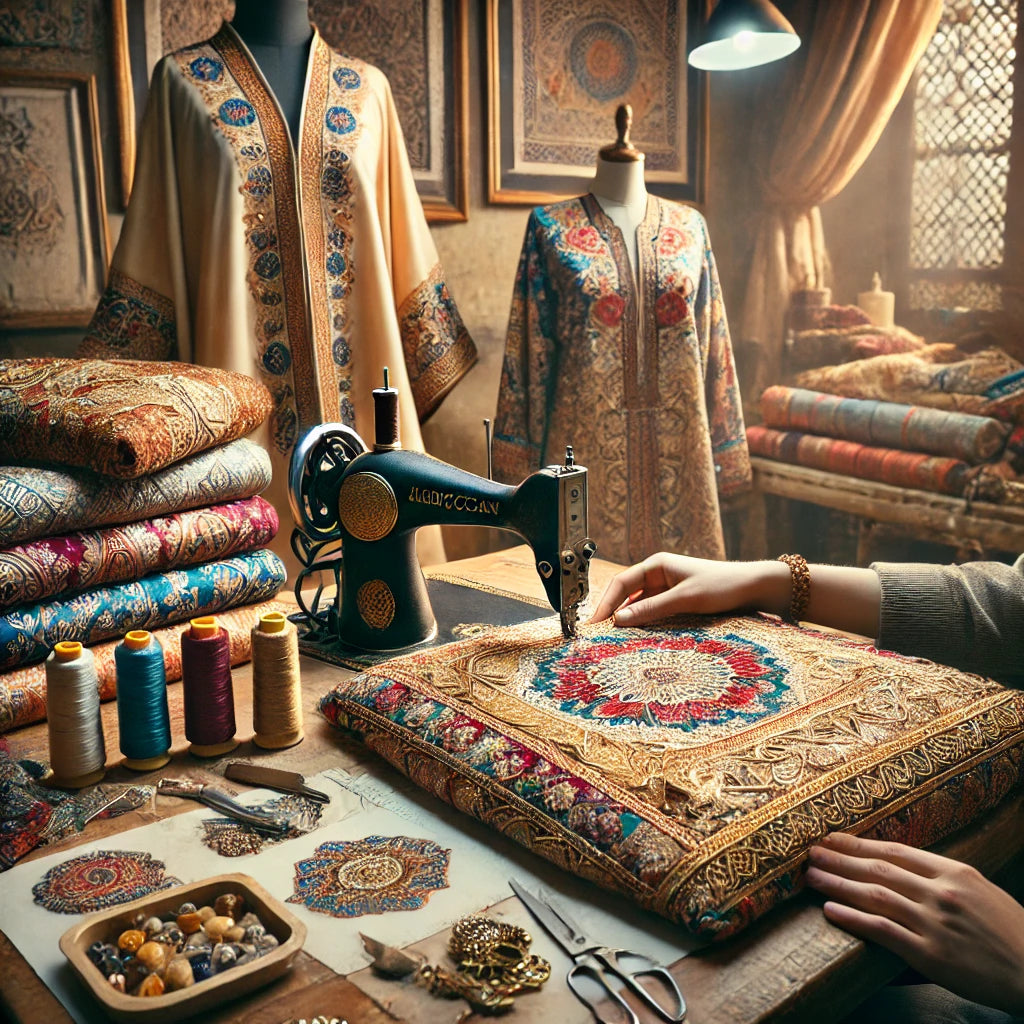
What is the origin of the caftan?
INTRODUCTION
The caftan, this traditional garment rich in history and culture, continues to fascinate people around the world. A centerpiece for special occasions in Morocco and other Maghreb countries, it is today a symbol of elegance and refinement. But what is the origin of the caftan ? You are probably wondering whether you are passionate about fashion or simply curious to discover the heritage of this timeless garment. This article will take you on a journey through time to explore the birth and evolution of the caftan, while giving you practical tips on how to wear it well. Don't forget to visit our " Moroccan Caftan " collection , an exclusive selection that highlights Moroccan artisanal know-how!
The Fascinating History of the Caftan: From East to West
The caftan dates back centuries, and while often associated with Morocco, its roots extend far beyond that country. To answer the question of where the caftan originated , we must look to ancient Persia. It was there, in the Persian Empire, that the first versions of the caftan appeared. At the time, it was a garment worn by elites to symbolize their status. Gradually, the caftan traveled along trade routes to the Maghreb, where it was adopted and transformed by the local culture.
Take, for example, the story of Fatiha, a Moroccan artisan. She has been perpetuating the art of weaving and embroidering caftans for three generations. “Each caftan I make tells a story, that of my family and my country. It’s more than a piece of clothing; it’s a tradition we cherish.” Today, Fatiha continues to create caftans for weddings and special occasions, and you can find her work in our “ Moroccan Caftan ” collection .
I. The caftan through history: from Persia to Morocco
The caftan has come a long way, both geographically and stylistically. To understand the origin of the caftan , it is essential to examine its journey through different cultures and eras. Originating in Persia, this garment was initially a sign of nobility and power.
1. The evolution of the caftan in Persia
During the Persian Empire, the kaftan was made from precious fabrics such as silk and gold. It symbolized not only wealth, but also spiritual and political power. This garment quickly spread throughout the empire, including Anatolia, where it underwent its first stylistic transformations.
To discover models inspired by this story, explore our “ Moroccan Caftan ” collection .
2. The arrival of the caftan in Morocco
The caftan first arrived in Morocco in the 13th century, thanks to trade with the Orient. Morocco, already rich in culture and craftsmanship, was able to adapt this garment to its own traditions. Moroccan caftans are distinguished by their refined embroidery and elegant cuts, perfect for prestigious events.
Don't hesitate to visit our " Moroccan Caftan " collection to discover unique pieces.
3. A royal garment
In Morocco, the caftan was quickly adopted by the royal court, beginning during the reign of the Marinid dynasty. Noblewomen wore sumptuous caftans during official ceremonies, which helped elevate the garment's status as a symbol of Moroccan elegance.
Discover our royal caftans in the “ Moroccan Caftan ” collection .
II. How to choose the perfect caftan for every occasion?
Now that you know more about the origins of the caftan , it's time to understand how to choose the right one. With so many styles and patterns available, it can be difficult to know which caftan will suit each event.
1. A caftan for a ceremony
If you're attending a wedding or ceremony, opt for a richly decorated caftan. Gold embroidery, pearls, and luxurious fabrics like silk or velvet are essential for these types of events.
Explore our ceremonial models in the “ Moroccan Caftan ” collection .
2. A caftan for an elegant evening
For a more informal but equally chic evening, opt for a caftan with simple lines, but enhanced with a few subtle touches such as discreet embroidery or refined belts.
Discover our suggestions for your evenings in the “ Moroccan Caftan ” collection .
3. A casual caftan for every day
The caftan isn't just for special occasions! Today, lighter, simpler versions exist for relaxing moments or family outings.
Browse our casual styles in the " Moroccan Caftan " collection .
III. Modern Caftan Trends: Tradition and Innovation Meet
The kaftan, although traditional, has continued to evolve and inspire fashion designers around the world. Today, it is modernizing while preserving its heritage. To better understand the origins of the kaftan , we must also observe how it adapts to current trends. The kaftan is no longer reserved for formal ceremonies; it is now a garment that can be worn in a variety of contemporary styles.
1. The caftan revisited by fashion designers
Contemporary fashion designers, both in Morocco and abroad, are revisiting the caftan by blending tradition and modernity. For example, Moroccan designer Leila Hadi has created a collection of minimalist caftans, playing with traditional Moroccan fabrics and modern cuts. "I wanted to give the caftan a new lease of life while respecting its essence," she explains.
Discover the modern models from our “ Moroccan Caftan ” collection .
2. Wearing the caftan every day: chic and casual
These days, wearing a caftan is no longer limited to weddings or important ceremonies. It is now possible to find caftans in lighter fabrics and simpler designs, perfect for a casual day on the town or an evening with friends. It combines comfort and elegance, an ideal combination for modern women.
Explore our casual caftans in the " Moroccan Caftan " collection .
3. The caftan in international fashion
The caftan is no longer just an icon of Moroccan fashion. It has become a true staple on international runways. Designers such as Yves Saint Laurent and Valentino have incorporated elements of the caftan into their haute couture collections. The caftan embodies timeless elegance, and its popularity is only growing worldwide.
Discover models inspired by international trends in the “ Moroccan Caftan ” collection .
IV. Tips for accessorizing and enhancing your caftan
Now that you know more about the origins of the caftan and its modern variations, it's time to learn how to accessorize this garment to make it even more exceptional. Wearing a caftan well also means knowing how to enhance it with the right accessories.
1. Choose the perfect belt
A well-chosen belt can completely transform the look of a caftan. It can accentuate the waist and add a touch of sophistication. For a traditional look, opt for an embroidered or beaded belt. If you're looking to modernize your caftan, a simple leather or gold-tone belt will be perfect.
Find elegant belts in the " Moroccan Caftan " collection .
2. Jewelry tailored to a refined look
Jewelry is essential to complete a kaftan. Dangling earrings, gold necklaces, and bracelets can add the finishing touch to your outfit. However, be careful not to overwhelm your look. It's important to maintain harmony between your kaftan and your accessories.
Discover accessory ideas in our " Moroccan Caftan " collection .
3. Shoes and bags to go with your caftan
Shoes and bags are often overlooked, but they can make all the difference. For a formal kaftan, embroidered sandals or gold mules will look stunning. For a more casual look, opt for simple sandals and a lightweight fabric bag.
Browse our selection of accessories in the “ Moroccan Caftan ” collection .
Conclusion
The caftan is much more than just a piece of clothing. It tells a story, that of cultures that intersect and of ancestral know-how passed down from generation to generation. In answering the question what is the origin of the caftan , we saw its journey through time and continents, and how it continues to adapt to modernity. To discover all the richness of the caftan and find the one that suits you, do not hesitate to browse our " Moroccan Caftan " collection .



Leave a comment
This site is protected by hCaptcha and the hCaptcha Privacy Policy and Terms of Service apply.